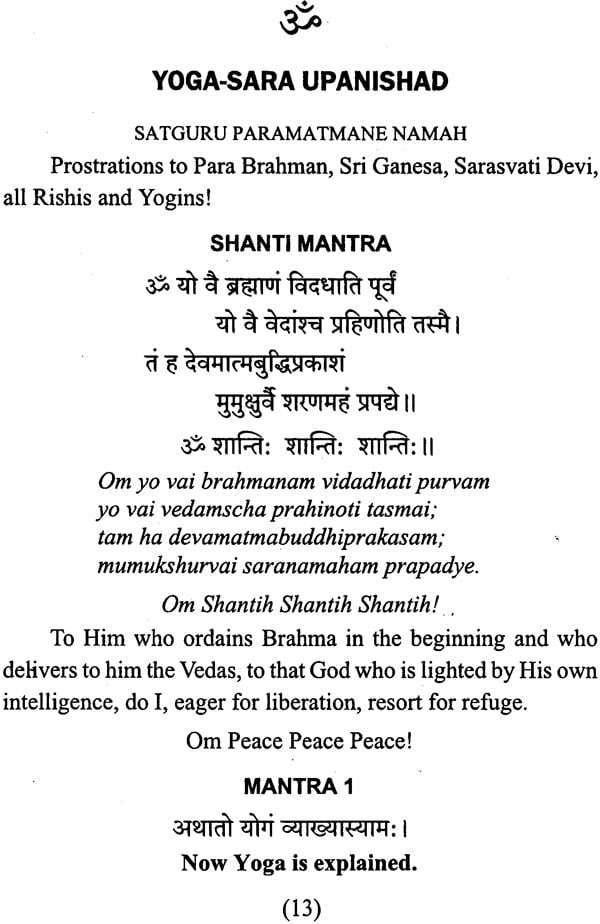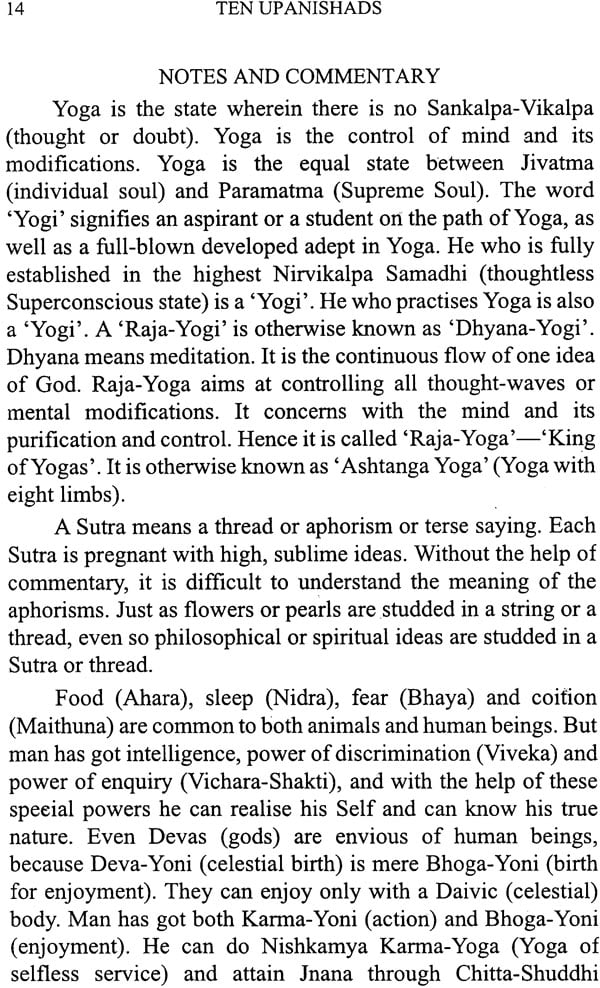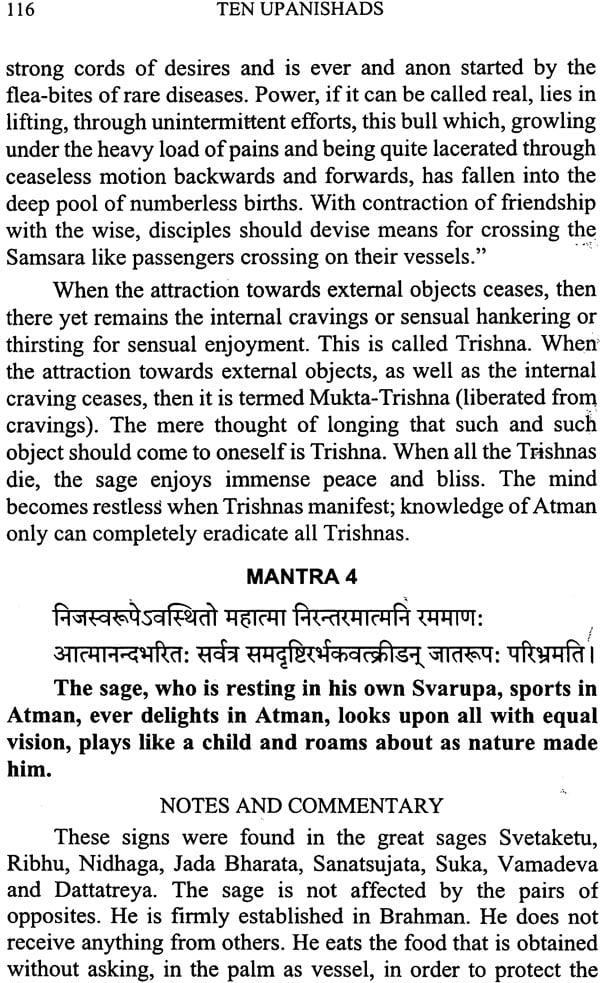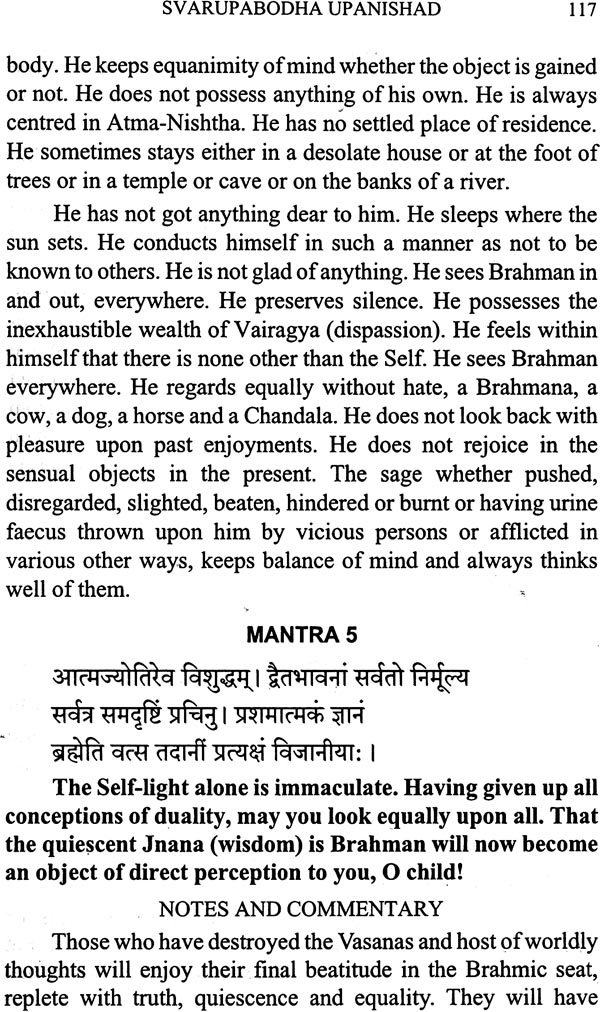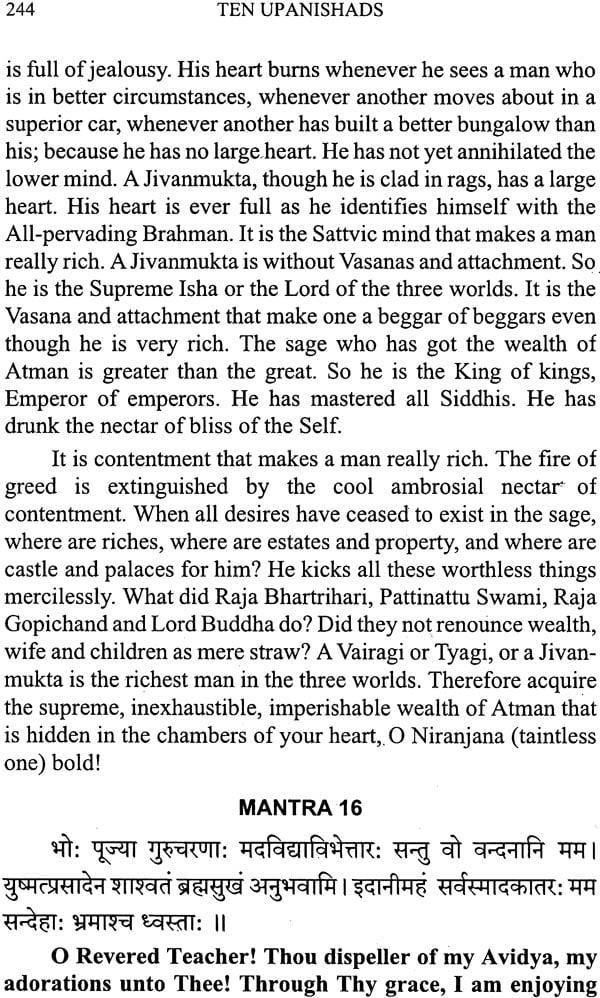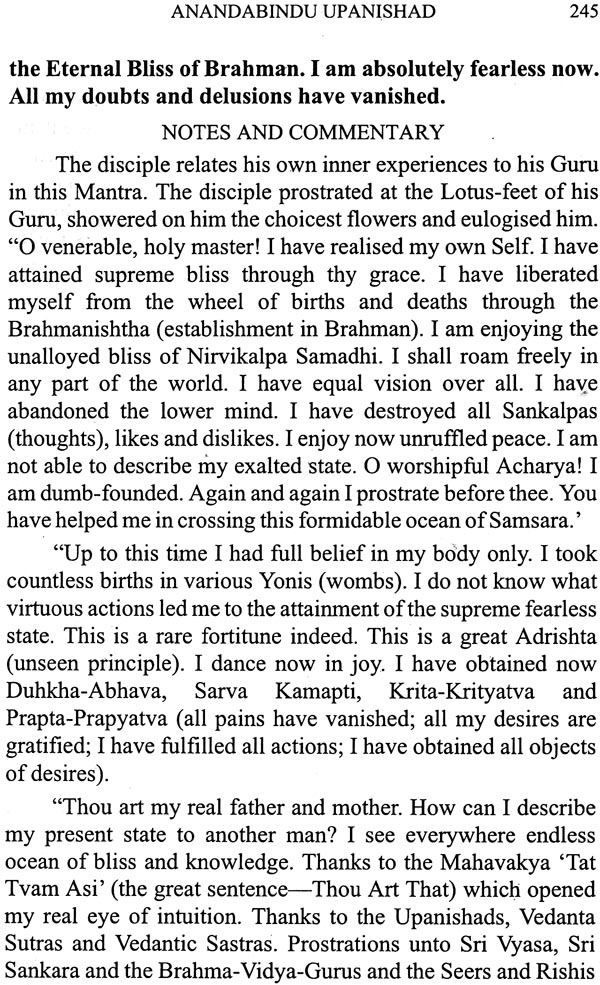
Ten Upanishads
Book Specification
| Item Code: | NAP703 |
| Author: | Swami Sivananda |
| Publisher: | THE DIVINE LIFE SOCIETY |
| Language: | English |
| Edition: | 2018 |
| ISBN: | 8170520975 |
| Pages: | 264 |
| Cover: | Paperback |
| Other Details | 8.5 inch X 5.5 inch |
| Weight | 300 gm |
Book Description
This present book is a classic among the various works of Swami Sivananda, for it contains the teachings and experiences of the ancient seers and sages. Rendered in a simple and lucid style by profuse explanations and commentaries, through the forceful and inimitable pen of the illustrious author and Sage of the Himalayas, this book is a guiding light for all the seekers on the spiritual path.
The teaching of this book have their basis on direct experiences of the sage-author. It is due to this reason that every word, every sentences of this marvelous book enters right into the heart of the reader and has a message to transform his life. It is an inspiration to strengthen his steps to God- realization.
May this book be an inspiration and light unto all. May the blessing of His Holliness Sri Swami Sivanandaji Maharaj illumine your path.
Born on the 8th September, 1887, in the illustrious family of Sage Appayya Dikshitar and several other renowned saints and savants, Sri Swami Sivananda had a natural flair for a life devoted to the study and practice of Vedanta. Added to this was an inborn eagerness to serve all and an innate feeling of unity with all mankind.
His passion for service drew him to the medical career, and soon he gravitated to where he thought that his service was most needed. Malaya claimed him. He had earlier been editing a health journal and wrote extensively on health problems. He discovered that people needed right knowledge most of all; dissemination of that knowledge he espoused as his own mission.
It was divne dispensation and the blessing of God upon mankind that the doctor of body and mind renounced his career and took to alife of renunciation to qualify for ministering to the soul of man. He setteled down at Rishikesh in 1924, practiced intense austerities and shone as a great Yogi, saint, sage and Jivammukta.
In 1932 Swami Sisvananda started the Sivanandashram. In 1948 the Yoga-Vaidanta Forest Academy was organized. Dissemination of spiritual knowledge and training of people in Yoga and Vedanta were their aim and object. In 1950 Swamiji undertook a lightning tour of India and Ceylon. In 1953 Swamiji convened a ‘World Parliament of Religions’. Swamiji is the author of over 300 volumes and has disciples all over the world, belonging to all nationalities, religions and creeds. To read Swamiji’s works is to drink at the Fountain of Wisdom Supreme. On 14th July, 1963 Swamiji entered Mahasamadhi.
Chit is Absolute Consciousness. This is the substratum for the intellect. Intellect borrows its light and power form this pure Chit. In reality you are ‘Chit Svarupa’-an embodiment of meditation. This demands self-denial, self-reuciation, self-abengation and self-forgetfulness. This little illusory ‘I’ must be thoroughly annihilated beyond resurrection. This is the teaching of Vedanta. The lessons in these Upanishads show the different kinds of Sadhana for meditation.
Vedanta is not a mere system of philosophy. It is not ‘day-dreaming’ as some ignorant people imagine. It is capable of being realized in life. Vedanta in daily life is quite possible. Madalasa, Chudala, Sankara, Mansoor and many others had lived the life of practical Vedantins. You can also do so if you will. One should live in the spirit of Vedanta by destroying ‘I-ness’, ‘mine-ness’, ‘selfishness’ and attachment’ . Then alone he can be really happy, even while discharging the duties of his life by remaining in the world. The angle of vision must be cultivated and developed. Then only one can feel the ‘Self in all’, the ‘One in all’. Then only you can have cosmic consciousness or universal life.
Then the petty life of hurry, worry, excitement and competition will seem to you as nothing when compared to the everlasting life of eternal sunshine and bliss in the Atman within. It is a great pity that almost all people have totally ignored the simple happy inner life of introspections and have caught hold of false toys of Maya, such as money, women, power, name, fame, position, etc. Sooner or later the experiences of the world, the knocks and blows of the mundane life’ will force them to turn their inwards to turn their minds inwards to realize the true, lasting happiness. The Jyotirbindu, Vicharabindu and Anandabindu Upanishads will help the readers to turn their minds inward and to realize the lasting happiness.
A knowledge of the ways and habits of the mind and its operations, the laws of the mind and the method of mental control and mental discipline, is very necessary if you want to enjoy real happiness and peace of an unruffled and abiding nature. You cannot expect everlasting happiness and perennial joy in the world of sense around us. The mischievous monkey-mind plays havoc in a variety of ways and causes cares, worries and anxieties. Money, property, women and children do not give permanent satisfaction. This is the experience of all people.
If you really aspire to unfold the lurking Divinity within, if you really want to get rid of the miseries of this Samasara, you must know the principles and technique of thought-control which are embodied in the system of Raja Yoga. You must know ways of right living, right thinking, right speaking and right acting. You must practice the five rules of Yama or right conduct or Sadachara. You must know how to withdraw the mind from external objects and fix it on one point. You must know the right method of concentration and meditation. Then alone you can be really happy. Then and then alone you will have power, independence and suzerainty. Then and then alone you will attain immortality, freedom and perfection.
Yogasara Upanishad contains the essence or gist of Raja Yoga. If you want to have further elaborate details on the subject, go through the lessons given in Brahmanubhava Upanishad, Brahmarahasya Upanishad and Advaitamrita Upanishad. If you digest and assimilate the fundamental principles of mental control which are enunciated in Yogasara Upanishad, you will have a comprehensive understanding of Raja Yoga.
Many old doubts of the aspirants are cleared in Sivajnanmrita Upanishad. This is of immense help for undertaking the fundamental principles of Vedanta. This one Upanishad alone is quite sufficient to have a clear grasp of Vedanta and to attain Self-realization. Jnanamrita means wisdom-immortality. He who studies this Upanishad and meditates on his Inner Self, gets knowledge of the Self, realizes (Jiva-Brahma-Aikyam) and thereby attains Immortality.
Upanishad means that which destroys Avidya or ignorance and takes the Jiva to sit near Brahman i.e., to get established in his own Svarupa (Brahma-Sthiti, Brahma-Nishtha). To attain this goal, the teaching in these Upanishands will be of immense help to all aspirants. Practice. Feel. Realize, O Viveka, bold!
Contents
| Introduction | 7 | |
| 1 | Yoga-sara Upanishad | 11 |
| 2 | Vedanta-asara Upanishad | 39 |
| 3 | Siva- jnanamrita Upanishad | 63 |
| 4 | Advaitamrita Upanishad | 85 |
| 5 | Svarupabodha Upanishad | 109 |
| 6 | Brahmarahasya Upanishad | 131 |
| 7 | Brahmanubhava Upanishad | 135 |
| 8 | Vicharabindu Upanishad | 177 |
| 9 | Jyotirbindu Upanishad | 201 |
| 10 | Anandabindu Upanishad | 225 |
| Appendices | ||
| 1 | Moksha Gita | 249 |
| 2 | Thou Art Soul | 261 |
| 3 | Thoughts on Vedanta | 262 |
